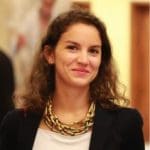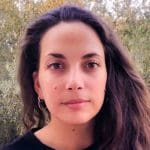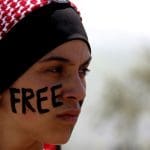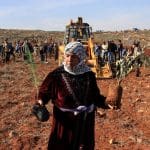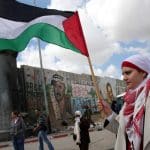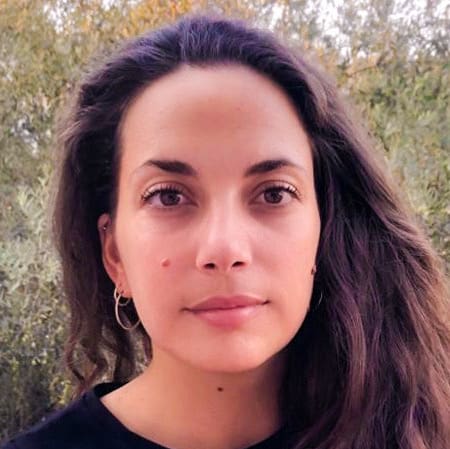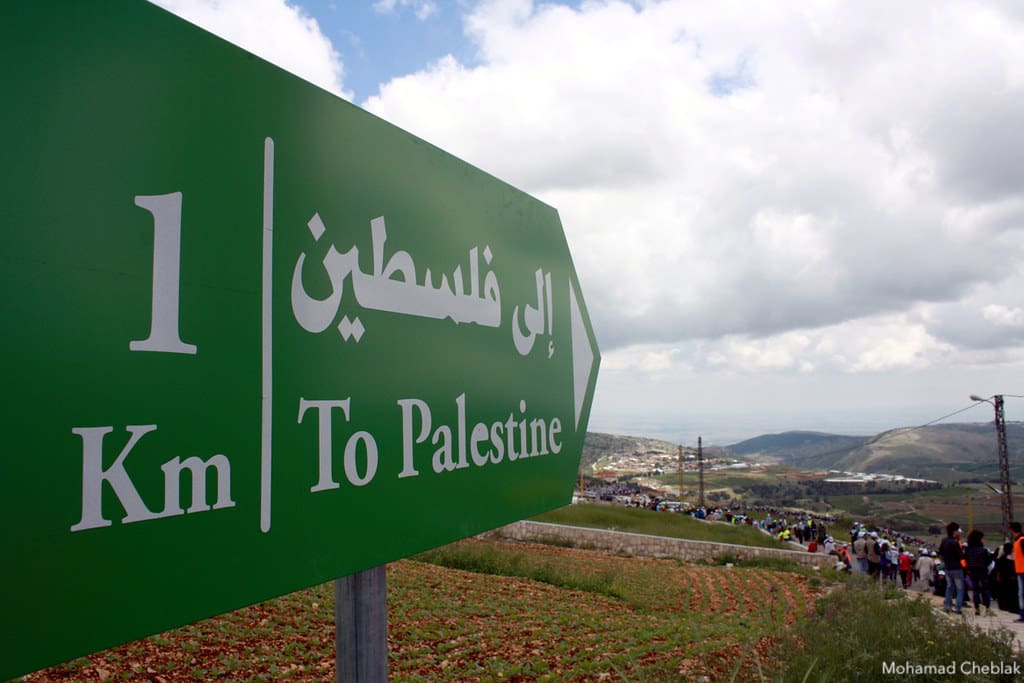
Overview
Palestinian futures have long been discussed without Palestinian input or within an imposed and limited framework. Indeed, most ideas of the future in mainstream political spaces rather consistently establish the containment of the Indigenous Palestinians and security for the Israeli settler state as their primary concern. The most recent manifestation of this was the “Vision for Peace” published by United States President Donald Trump’s Administration.12
This “vision” is a far cry from the revolutionary political mandate of the Palestine Liberation Organization (PLO) that was established in the 1960s and which sought to liberate Palestine and its people from the Zionist settler colonial project that established Israel.3 It is also a far cry from the two-state solution, which was imposed as the most appropriate and feasible future for Israelis and Palestinians and was embedded in the narrative of Israel and Palestine as two warring national groups rather than the outcome of the Zionist project.
The adoption of this narrative was implicit in the PLO’s Ten Point Plan in 1974 and became explicit at the Palestinian National Council in 1988. It was further cemented by the Oslo Accords in the early 1990s which laid out a timetable for achieving Palestinian statehood in the 1967-occupied lands. The PLO’s previous political framing of an anti-colonial struggle was turned on its head, shifting the focus from collective liberation to one that prioritized individual success and capital gain within a façade of a “state-in-waiting.”
This political and discursive shift also set about a fundamental transformation of Palestinian civil society, which became largely reliant on external donor patronage and bound much of the Palestinian capacity for collective imagination within a very specific political agenda, marginalizing both the refugees and the Palestinian citizens of Israel.
The effort to limit Palestinian collective visioning to a framework of statehood along the 1967 lines has been largely successful Share on XAs Israel moves from de facto to de jure annexation of the rest of the occupied West Bank many third parties desperately hold on to the two-state solution as the one that best protects their diplomatic and trade interests with Israel. For some Palestinians the statehood framework still offers what they see as the most feasible future in the short term. Its nationalist dressing is also attractive especially as statehood has been the dominant prism through which liberation is imagined. Indeed, the effort to limit Palestinian collective visioning to a framework of statehood along the 1967 lines has been largely successful.
However there have been attempts to push these boundaries and some more radical attempts to transcend them altogether. This policy brief focuses on the possibilities for building a collective vision for a Palestinian future. It draws on Palestinian experience in visioning and discusses approaches to consensus-building that could advance a vision shared by the majority of the Palestinian people.
Future Visions: Their Promise and Pitfalls
In a serious attempt to push the boundaries a group of Palestinian citizens of Israel put forward a detailed future visioning in 2006-2007. Their efforts demonstrated an unprecedented collective articulation of the political and social aspirations of this particular part of the Palestinian people. The future visioning consisted of four documents; The Future Vision Document; An Equal Constitution for All; The Democratic Constitution; and The Haifa Declaration. They were collectively known as the Future Vision Documents (hereinafter referred to as the “Documents”) and were published and produced as a collective effort by Palestinian politicians, intellectuals, and civil society leaders.
The Documents laid out what the collective saw as the social and political demands of the Palestinian community in Israel, but interestingly they also put forward a concise Palestinian historical narrative. The result was a structured theoretical framework for Palestinian rights within the State of Israel. The Documents did not present new ideas; rather, they consolidated what many had been demanding for decades. This was, however, the first time these ideas were put forward in such a clear way and with a clear vision of what a more acceptable future for the Palestinian citizens of Israel could look like.
At their core, the Documents call upon the State of Israel to abandon its Jewish character and to embrace all its citizens. At the same time, they assert the community’s national Palestinian identity and affiliation with the Arab world as well as their Indigenous status. Indeed the historical narrative in the Documents is clear and centers the Nakba as the central temporal reference and the root of Palestinian tragedy. There are also clear and articulate descriptions of the genesis of the Zionist settler colonial project in Palestine:
Towards the end of the 19th century, the Zionist movement initiated its colonial-settler project in Palestine. Subsequently, in concert with world imperialism and with the collusion of the Arab reactionary powers, it succeeded in carrying out its project, which aimed at occupying our homeland and transforming it into a state for the Jews – Haifa Declaration, pp. 11 – 12.
Israel is the outcome of a settlement process initiated by the Zionist-Jewish elite in Europe and the West and realized by Colonial countries contributing to it and by promoting Jewish immigration to Palestine, in light of the results of the Second World War and the Holocaust – The Future Vision Document, p.9.
The focus on the need for historical redress for the injustice of the Nakba is what sets these Documents apart from other initiatives by the Palestinian citizens of Israel that call for equality. However while the Documents briefly address the continued oppression of the other parts of the Palestinian people, calling for an end to the military occupation of the 1967 lands and explicitly demanding that Israel recognize the right of return of the Palestinian refugees based on UN Resolution 194, there is no further discussion of how the return of the refugees could be facilitated. Nor do they set the end of the occupation and the implementation of the right of return as a prerequisite for achieving the demands of the Palestinian citizens of Israel.
The focus on the need for historical redress for the injustice of the Nakba is what sets the (Future Vision) Documents apart from other initiatives Share on XIndeed these Documents focus clearly and deliberately solely on the condition of Palestinian citizens of Israel, consciously or not separating their cause from that of their fellow Palestinians elsewhere and sitting firmly within the two state framework. In summary, the call of the Future Vision Documents is not for a dismantlement of the structure but rather its reform. While they present a blueprint for the future, they do so within the confines and boundaries set by the settler colonial regime, completely disregarding their recognition of Palestinian Indigeneity.
There have been other efforts to envision alternative futures, including those put forward by initiatives promoting a single secular state for all the people living from the Jordan River to the Mediterranean Sea. For example, the One Democratic State Campaign (ODSC), established in Haifa, offers a ten point political program that includes the right of return for refugees and the restoration of their property as well as other provisions for ensuring equality. However, like the Future Vision Documents, the ODSC falls short of calling for decolonization despite its recognition of Israel as an apartheid and colonial state. There have also been attempts by individuals or groups to develop alternative visions for the future, including by focusing on specific issues such as on the right of return for Palestinian refugees. These include Salman Abu Sitta’s detailed plan for return as well as various grassroots groups in Palestine, including youth groups who are envisioning the rebuilding of their ethnically cleansed villages (see also my commentary When Palestinians Imagine.)
Collective Consensus-Building
The Future Vision Documents were produced through consultations and debates between various intellectuals, civil society leaders and politicians from the Palestinian community in Israel. However they were not a result of a broad consensus that drew on other segments of society, which may be one reason for the limits to their impact and their reach.
Consensus-building must be an essential part in the articulation of a future vision that would address the Palestinian people in their entirety. Consensus (ijmaa’ in Arabic) is defined as an agreement or accord that is reached by a collective or a group of people. The term can refer to both the process and the final decision itself. As opposed to voting by majority, which can lead to contentious outcomes and exclude large segments of people, consensus requires everyone involved to reach a negotiated agreement. The process can also facilitate building a network of trust and confidence among different groups and parties.
In the absence of sovereignty and self-rule (particularly in colonial situations), it is necessary to think about a more revolutionary consensus — one that is derived from the people in ways that are not necessarily possible through what is considered as standard democratic procedures and institutions. Palestinian history provides us with examples in which revolutionary consensus was part of the political process, including during the early days of the PLO and during the First Intifada as well as more contemporary articulations.
The initial founder of the PLO, Ahmad al-Shuqairyi, the Palestinian representative to the Arab League, formulated the organization’s first political documents, including the national charter and statutes. These were later approved by an assembly of 422 Palestinians who met in Jerusalem and who included notables, local heads, professionals such as doctors and lawyers, and representatives from women’s organizations (in the end women were only assigned a limited number of seats). There was a noticeable absence of those from refugee camps and from peasant or working class backgrounds.4 This was a particular point of discontent particularly among students and young activists, as well as those within Fatah and Islamic groups. The lack of representation, the feeling that the PLO was subservient to the Arab states, as well as concern that the PLO was not a revolutionary body sowed the seeds for radical structural change. Consensus for change was reached among the guerilla groups, who themselves had significant popular and grassroots legitimacy as a result of their armed struggle with Israel. Yasser Arafat was elected Chairman of the PLO in 1969 in what was essentially a political takeover led by Fatah supported by other guerilla groups.
The takeover brought in a decade of political pluralism and incorporated not just the guerrilla groups and political parties but also unions and other collectives. The initial consensus on what form the Palestinian liberation movement should take — ie. revolutionary armed struggle and free of Arab states’ control — lasted until Israel drove the PLO out of Lebanon in 1982 (see Jamil Hilal’s recent Reflections on Palestinian Leaderships Past). Thereafter, as the guerrilla groups moved to the occupied Palestinian territory (OPT) any remaining consensus was overshadowed by Arafat’s increasingly authoritarian methods of appointing and confirming representatives as well as an overrepresentation of diaspora elites.
In 1987 the revolutionary spirit moved to the streets of Palestine in a manifestation of the mass collective protest of the First Intifada. The uprising was the result of years of grassroots organizing which created the foundation for mass politicization and popular struggle. Unions, student groups, collectives, and political factions formed a coalition known as the Unified National Leadership of the Uprising. Decisions were made within this body and a rotating leadership system was established in the spirit of representation but also to respond to the frequent arrest of leaders. The uprising was centered on the notion of “people’s power” as a form of popular and revolutionary consensus. As Linda Tabar writes; “The left took the lead in this process… affirming the people as the means and the goals of the struggle, the movement ‘invested in people’s potential, abilities’ and their belief in their own agency…the left saw the people as the space in which to build autonomous forms of power that could buttress the struggle to create alternative realities.”5
A more contemporary articulation of consensus can be found within the Boycott, Divestment, Sanctions Movement (BDS) which was established in 2005 following a call from 170 Palestinian unions, refugee networks, women’s organizations, professional associations, popular resistance committees and other Palestinian civil society bodies. They upheld a consensus on three basic demands: 1) The end of the Israeli occupation and colonization of all Arab lands and dismantling the wall; 2) Recognizing the fundamental rights of the Arab-Palestinian citizens of Israel to full equality; 3) Respecting, protecting and promoting the rights of Palestinian refugees to return to their homes and properties as stipulated in UN Resolution 194.
In the absence of sovereignty and self-rule (particularly in colonial situations), it is necessary to think about a more revolutionary consensus Share on XThe BDS Movement’s Call was broad enough that it addressed the essence of the Palestinian struggle by both problematizing Zionism as a structure but also in speaking to the entire Palestinian people in their three geographic parts. It was a very clear and articulate rejection of Oslo which had not only excluded two core parts of the Palestinian population (refugees and the Palestinian citizens of Israel) but also failed to tackle the key issue, Zionism, as a settler colonial project. In addition, the Call was a response to Palestinian leadership failure and inaction, particularly in the wake of the July 9, 2004 International Court of Justice Advisory Opinion of Israel’s separation wall. Although BDS exists as a movement that mobilizes international support to pressure Israel to uphold international law, it quite clearly presents a vision for the future through its three demands. The most impressive thing about BDS is not only how it brought a vast majority of Palestinian civil society, including political parties, behind the Call. It is also the way in which the organization has continued to function through consensus in its decision-making process despite the wide variety of political and social views that are represented in its leadership body, the BNC (BDS National Committee).
Importantly, BDS itself is not a political party nor is it a representative body of the Palestinian people. But as a political movement it demonstrates well the possibility of achieving consensus among Palestinians over core issues which could be revitalized into a political agenda and a future vision. Given the current climate of political polarization and a lack of democratic practice, this example of consensus is well worth remembering.
Challenges and Possibilities
A recent anthology of short stories called Palestine +100 was published in which Palestinian writers share their dystopian and fantasy imaginations of Palestine in 2048 — one hundred years after the Nakba.6 Many of the stories have rather grisly plots in which the Israeli regime morphs and adapts its oppression of the Palestinian people into hi-tech nightmares. Even more frightening is that several of these futures are highly believable, particularly given the rapidly deteriorating situation on the ground. Now more than ever it is imperative that Palestinians articulate alternatives to such possible futures and move beyond a paralyzed Palestinian leadership that has been unable to counter the Trump administration’s “vision.”
With this in mind it is important to consider the stumbling blocks and ways around them. The first stumbling block in discussions of the future is that of “feasibility,” in other words what is considered possible in the context of the existing hegemonic framework. Yet what is meant by the idea of feasibility and who determines it? Feasibility is generally built on the notions of possibility, rationality, and practicality that are determined by those in positions of power. In the case of Palestine the Oslo framework has defined feasibility for over two decades, dictating that Palestinian futures must be defined within the confines of a two-state framework and that Palestinian sovereignty will only be granted in a staged, conditional process. Issues such as Jerusalem and refugees are relegated to “final status.” Richard Falk, writing on the Palestinian future, argues against the feasibility argument and in particular the two-state framework which he maintains consists of dead-end characteristics:
…horizons of feasibility limit Palestinian options to two: either agree to a further round of negotiations that are all but certain to fail, or refuse such negotiations and be held responsible for obstructing peace seeking efforts.7
A “feasible” future is thus no way to ensure the fulfillment of Palestinian rights or liberation. Falk instead urges that “a politics of emancipation” be privileged in discussions about the future. Some Palestinians and Palestinian rights activists have also referred to this as a “rights first approach.” The fulfillment of fundamental Palestinian rights and sovereignty, and not feasibility, must be the basis of any future vision.
The second stumbling block for Palestinians to overcome is the notion of colonial permanence in future imagining. Writing about the case of French colonialism in Algeria, Frantz Fanon wrote that it “always developed on the assumption that it would last forever.”8 Settler colonial and colonial regimes seek to control perceptions of reality in order to bind Indigenous and colonized people in a seemingly perpetual cycle of oppression. Imagining a future beyond this oppression is thus an important exercise that Palestinians must engage in. It must be stressed that this is not an exercise in fantasy but rather an exercise in imagining what a decolonized future would look like.
A 'feasible' future is thus no way to ensure the fulfillment of Palestinian rights or liberation Share on XThe third area is shedding the discourse of non-governmental organizations (NGOs) and neoliberalism. Years of NGO-ization and neoliberalism in Palestine have led to a de-politicization of language and have constrained the perceived realms of possibility (see Hazem Jamjoum’s Reclaiming the Political Dimension.) Revitalizing a local language of liberation and decolonization is essential and a shared lexicon is vital in the collective imagining process.
Achieving a shared vision for the future may seem impossible in today’s context of political polarization and fragmentation. Yet, as described above, we have examples in which Palestinians have reached consensus on core issues, enabling them to continue to work and mobilize and yet also incorporate political plurality. The culture of consensus is one that needs to be nourished and built on, particularly in the context of a geographically, socially and politically fragmented Palestinian society.
- To read this piece in French, please click here. Al-Shabaka is grateful for the efforts by human rights advocates to translate its pieces, but is not responsible for any change in meaning.
- The full title is “Vision for Peace, Prosperity and a Brighter Future for Israel and the Palestinian People.”
- Fayez Sayegh, Zionist colonialism in Palestine (Beirut: PLO Research Center, 1965).
- Yezid Sayigh, Armed Struggle and the Search for State: The Palestinian National Movement, 1949-1993, Oxford: Clarendon Press (1997), p.99.
- Linda Tabar, “People’s Power: Lessons from the First Intifada”, (Center for Development Studies, Birzeit University, April 2013): p.3.
- Basma Ghalayini, ed., Palestine +100: stories from a century after the Nakba, (Manchester, UK: Comma Press, 2019).
- Richard Falk, “Rethinking the Palestinian Future,” Journal of Palestine Studies, volume 42, Summer (2013): p.83.
- Frantz Fanon, A Dying Colonialism, New York: Grove Press, (1965), p.179-180.


